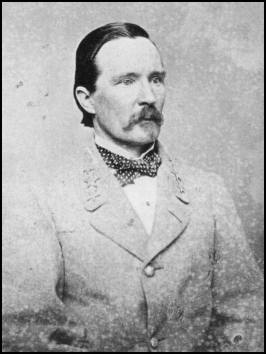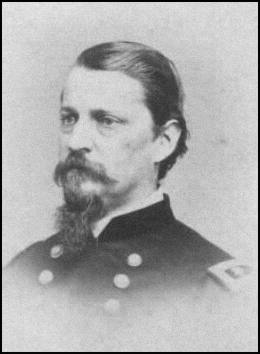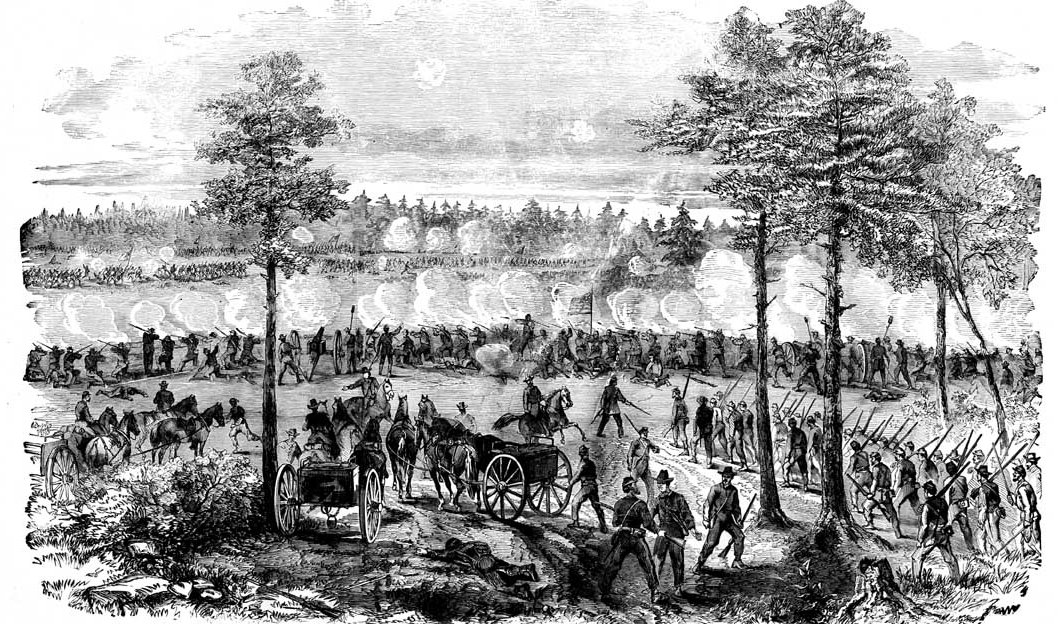| Back |
The Battle of Reamís Station
|
Other Names: Wilson's Raid Location: Dinwiddie County, Va. Date: August 25, 1864 Campaign: Richmond-Petersburg Campaign (June 1864-March 1865) Principal Commanders: Maj.Gen. Henry (Harry) Heth [CS] Maj. Gen. Winfield Scott Hancock [US] Forces Engaged: Corps Estimated Casualties: 3,492 total Result: Confederate victory |

Heth |

Hancock |
On August 24, Union II Corps moved south along the Weldon Railroad, tearing up track, preceded by Greggís cavalry division. On August 25, Maj. Gen. Henry Heth attacked and overran the faulty Union position at Reamís Station, capturing 9 guns, 12 colors, and many prisoners. The old II Corps was shattered. Maj. Gen. Winfield Scott Hancock withdrew to the main Union line near the Jerusalem Plank Road, bemoaning the declining combat effectiveness of his troops.
 |
Description:(A Federal point of view) "The Siege of Petersburg. Battle of Ream's Station- the attempt of the enemy to regain the Weldon Railroad on the evening of August 25th, 1864. The enemy having been repulsed, the Federal skirmishers followed, advancing to the position they had formerly held, and capturing a number of prisoners. Shortly after the enemy again advanced, and were again driven back with heavy loss; and their third assault, made about four o'clock P. M., was attended with a like satisfactory result. In the first three charges the enemy used no artillery, but about five o'clock P. M. they opened a heavy, concentrated fire from a number of batteries, pouring a storm of shell and other missiles over the entire ampitheatre included within the Federal lines. After about twenty minutes of this artillery fire the enemy again made their appearance in front of General Miles's division, their assault being directed mainly against his centre. Emerging from the woods, they advanced in two lines of battle. The Federal artillery and musketry greeted them, as before, with a rapid fire, but without checking their progress. On they came, with bayonets fixed and without firing a shot. They approached the Federal lines, gained the outside of their intrenchments, and at some points a hand-to-hand conflict ensued over the top of the breastworks, the Federals beating back the Confederates with their bayonets as they atempted to climb over. But soon it was found that the Federal line was broken near the centre, and the gap once made rapidly grew wider, until nearly the entire line was swept back, leaving the Federal breastworks and artillery in the hands of the enemy. General Miles, with great coolness, set to work to rally the men, and in a short time succeeded in forming a line with its right resting against the breastworks. At the same time General Hancock ordered the Second Division to be faced about, and cheering and urging the men forward, ledthem in person in a charge at double-quick. This charge, which was made under a heavy fire, was gallantly executed, and in conjunction with the line rallied by General Miles instantly checked the enemy and regained the intrenchments for some distance further toward the left. After the enemy had been checked in the centre and along that portion of the line against which they had chiefly directed their attack the graetest part of the Second Division returned to their own intrenchments. By this time it was dark and the fighting ended. Our sketch shows the repulse of the last Confederate assault."ó Frank Leslie, 1896
Source: Frank Leslie, Famous Leaders and Battle Scenes of the Civil War (New York: Mrs. Frank Leslie, 1896)
HOME
About SCV -
Join SCV -
Legionary -
Co. News -
Member Services -
Education
Ancestors -
Memorials -
Links -
Photo Gallery -
Guest Book -
Site Index